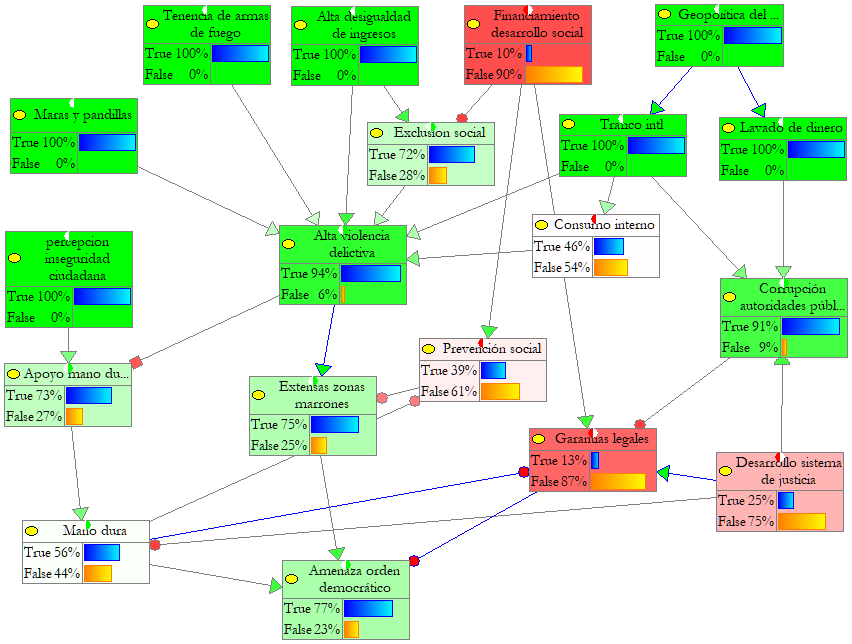A qualitative modeling environment like QGeNIe has many applications. In this section, we give three example of applications that we have encountered.
A. Rapid Prototyping
Even if the goal is to build a fully quantified Bayesian network, QGeNIe is extremely valuable as an environment for rapid prototyping. Models developed quickly within QGeNIe can be exported to GeNIe for further elaboration and parameter refinement.
B. Modeling in “Soft Sciences”
As late Herb Simon convincingly argued (Simon 1996), “soft sciences” are really hard sciences. Models of social sciences systems are really hard to build, because very often little is known about them. Still, there is ample evidence from behavioral decision theory (e.g., Dawes, 1988) that even simplest mathematical models typically perform better than unaided human intuition. QGeNIe has been applied to projects that are truly hard to tackle with formal methods. One example that we are aware of is an application in modeling security in Costa Rican cities (Pérez-Liñán, 2008). The screen shot below shows a simple QGeNIe model used in the study.

C. Group Decision Making
The original inspiration for QGeNIe was provided by our collaboration with policy analysts at the United States Naval War College, Bradd Hayes and Theo Gemelas. A model developed there (see the screen shot below, the foundations for this model were developed in (Hayes & Sands, 1997), Figure 5-1, page 101) consisted of 99 variables organized into 12 submodels. The goal of this model was to bring together experts from a variety of areas relevant to stability of a region (in this case, the Black Sea region). The experts know some aspect of the problem (e.g., economy, culture, or energy) but not everything. They may help with building various parts of the model. Asking “what if” questions of the complete model allows each of the individual experts to verify their intuitions but also see how manipulations propagate through those submodels that they did not know much about. A model of this complexity cannot typically be understood completely by a single expert. Presence of multiple experts in a room, each of whom is familiar with a parts of the model, usually helps with verifying model assumptions and obtaining insight into the problem and consequences of the resulting decisions.
